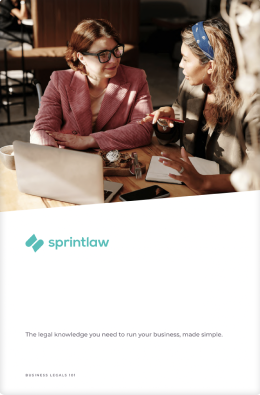Contents
When you’re looking at products to buy, the first thing that might influence your decision is the packaging and labelling. So, it’s common for businesses to try and make their product look as great as possible at the point of sale.
But at what point does this become false or misleading? And how can customers be protected?
This is why labelling and packaging is such a heavily regulated area. The main pieces of legislation to look out for are the Fair Trading Act 1986 (FTA) and the Consumer Guarantees Act 1993 (CGA).
It’s important that businesses understand their obligations under the FTA and CGA (as well as other relevant laws) to avoid penalties and, in serious cases, a stressful lawsuit.
Here’s a guide to help you through labelling and packaging requirements in New Zealand.
What Does The FTA Say?
The FTA encourages fair trading in New Zealand, such as protecting consumers from making purchases based on misleading or deceptive information. Two main takeaways from the FTA are:
- You cannot engage in misleading or deceptive conduct (or conduct that is likely to mislead or deceive)
- Consumers should have access to all the relevant information prior to making a purchase
So, this law would regulate the kind of information you display on your packaging. This also extends to any piece of information that you choose not to say, which could be essential to the customer’s decision to purchase the item.
Generally speaking, you should be asking yourself: ‘Is my statement capable of deceiving people? Is it likely to lead them to false conclusions about my product?’. If your answer is yes, then you need to amend your labels in a way that is compliant with the FTA.
| Examples A cleaning product that claims to kill 100% of bacteria when there is no scientific data or testing to support this will be considered misleading and deceptive. If a blanket claims it is made of 100% silk when it is actually only 50% silk, this is misleading and deceptive. |
What Happens If I Don’t Comply?
We know you can get carried away with how well you portray your product, but misleading information is a breach of the FTA. Non-compliance can result in some hefty fines.
If the breach is particularly serious, it can even lead to criminal prosecution- make sure you’re compliant with these laws at all times!
Types Of Products
Every business has different obligations depending on the type of product they sell. Let’s look at these in more detail.
Food
As you can imagine, food is carefully regulated as there are high risks of health issues if something goes wrong.
TThe Ministry for Primary Industries requires food products to accurately disclose the country of origin (we’ll cover this in more detail shortly).
Their labelling requirements will depend on a number of factors, such as: :
- What food category the item falls under
- Whether it was grown, produced or made in New Zealand
- Whether it is in a package or not
The main food categories with different labelling requirements to look out for are:
- Genetically modified foods
- Alcoholic beverages
- Honey and other bee products
- Fish
- Other types of meat
- Food with hemp seeds and hemp seeds
- Eggs and eggs products
There are lots of things to consider when deciding whether you’re subject to certain labelling requirements, so it’s highly encouraged that businesses selling food regularly check that they are compliant.
If you’re unsure about whether your products are subject to labelling laws, you can read more here.
Cosmetics
Like food, cosmetics also need to include a list of ingredients. This is to protect the safety of consumers with skin concerns (such as sensitive skin or allergic reactions).
The Environmental Protection Authority (EPA) has noted down some standards for labelling cosmetics.
The main requirements found within this standard are:
- Products should be available to consumers at point of sale and contain a batch code
- Information needs to be displayed in a way that allows consumers to be properly informed (so the style or design of the container is no excuse)
- All the potential hazards should be listed
- There should also be information on contacting the manufacturer
- There should be information about disposal of the product
If your business sells any form of cosmetics, make sure you’re aware of all your labelling requirements.
Chemical Products
Working with chemicals poses even greater risks to consumers, so naturally, there are strict regulations for these types of businesses.
If you’re a chemicals business, it’s important to read about your obligations, mainly set out by the EPA. Depending on the type of chemical and its use, you might need to adhere to not only labelling requirements but filling out safety data sheets.
Find out which requirements apply to you and take steps to fulfil them so your business practices can remain legally compliant.
I’m A Seller – What Are My Responsibilities?
As a seller, it’s your responsibility to check if your type of product is subject to certain labelling or packaging requirements. This just means that what you can put on your packaging and labels is all regulated to protect consumers.
So, let’s break down the steps you’d need to take to ensure compliance with the FTA and other relevant laws.
Country of Origin Claims
A Country of Origin claim is something you display to inform consumers of where the product was made. Some products are required to disclose the country of origin (you should check whether this is a requirement- especially if you’re selling a particular food product).
For example, you might come across a type of olive oil that says ‘Made in Italy’. However, it doesn’t necessarily need to be in writing – even if you have a map of Switzerland, this can imply that the product was made in Switzerland. If this leads the consumer to reasonably conclude that it was made in Switzerland, when this is false, then this is a breach of the FTA.
It’s good business practice to regularly ensure your compliance with the regulations as this allows you to have an automatic defence if you’re ever accused of breaching the law.
In other words, if someone tries to take legal action against you for breaching the FTA, you can argue that you have been compliant with its standards – this is known as a safe harbour.
However, it’s worth noting that this doesn’t apply to every situation as individual circumstances can influence the judgement on this. This area of labelling and packaging can get pretty tricky, talk to one of our legal experts for more advice today!
Pre-packaged Goods
Pre-packaged goods need to comply with national trade measurement laws. So, this includes details like:
- Position, size and format of measurement information
- Name and address of the packer
Sellers and manufacturers have specific obligations under these measurement laws, such as ensuring that quality control systems are maintained well. Manufacturers also need to make sure that the quantities in their packages meet the relevant standards.
Labelling Requirements
Labelling requirements for products can be very specific, down to the position of the measurement marking and the units of measurement.
So, it’s important to check that your labels are compliant with these requirements to avoid any headaches later down the track.
For example, a common mistake is when the graphics on the display overlap the measurement marking. These markings need to be clearly displayed, so a good rule of thumb is ensuring it remains 2mm from the edge or away from other images on the package.
These requirements are quite specific and can differ from product to product, so it’s a good idea to familiarise yourself with them.
What If I’m Under A White Label Agreement?
A White Label Agreement is when one business sells goods or services under another business, but it is still their brand name. It’s commonly used between a reseller and a manufacturer. So, how would this work with food products?
| Example Let’s say Amie sells a range of sweets as part of her online business. She makes an arrangement with Phillip, who specialises in baking vegan donuts. Amie wants to include these vegan donuts as part of her online business, so she resells them (but Phillip’s logo is still displayed). So when a customer comes across Amie’s store, they will buy the vegan donuts from Amie but the donuts are still under Phillip’s brand. This is a White Label Agreement. |
How Does This Relate To Packaging Laws?
White Label Agreements need to cover details around packaging, since we’re dealing with two separate businesses and one product.
So, both parties need to agree on what the labels and packaging will say to customers. You’d need to discuss:
- What ingredients are used
- The mass of each ingredient
- How this will be displayed on the packaging
- How each brand/logo will be displayed on the packaging
Both parties need to consider:
- Country of origin claims
- Pre-packaged goods requirements
- Labelling requirements
Importing and Exporting Goods – What Do I Need To Know?
Non-compliance with the labelling requirements for your product can also stop them from going across the border. In other words, the New Zealand Customs Service can seize your products if they do not comply with the standard.
For example, you cannot import or export goods that have a false trade description. This includes details of size, weight, quality and ingredients. So, you need to double check this before importing or exporting as there are no exemptions.
If you’re exporting products, the same rules apply. Even though there are no specific requirements to label goods for export, it still needs to have an accurate trade description.
It’s also your responsibility to check that the country you’re exporting to has certain labelling requirements for your product. So, your product might be able to leave the country but it could risk not making it through to the expected destination.
Need Help?
The world of labelling and packaging laws can be overwhelming, as it’s so heavily regulated. After all, the products you provide to consumers need to be 100% safe for consumption.
Nonetheless, we know that businesses might forget to consider a few important things every now and then. To avoid these kinds of mishaps, make sure to carefully go through the relevant regulations and checklists.
If you’re still unsure, we also have a team of experienced legal professionals who are happy to help you out.
Whether you’re starting your own business and need help with packaging laws, or you’re entering a White Label Agreement, we’re more than happy to be of assistance.
If you would like a consultation on your options moving forward, you can reach us at 0800 002 184 or [email protected] for a free, no-obligations chat.
Get in touch now!
We'll get back to you within 1 business day.











